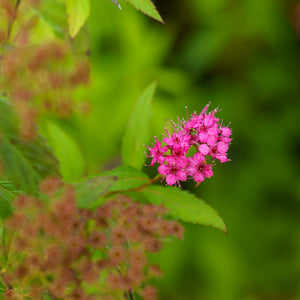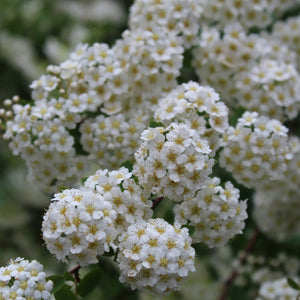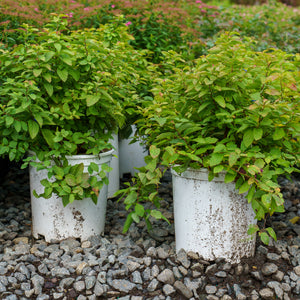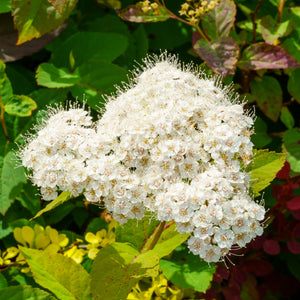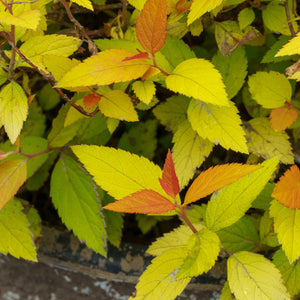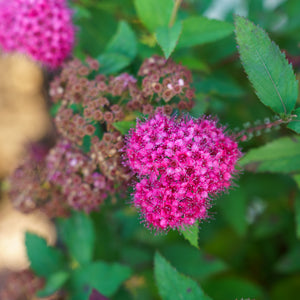The Spirea Guide
Spirea (Spiraea spp.) is a widely used, low-maintenance flowering shrub that delivers abundant blooms, vibrant foliage, and impressive versatility. From compact mounded forms to arching spring bloomers, spirea fits into virtually any garden style. Its ease of care and ability to provide multi-season interest have made it a staple in both residential and commercial landscapes.
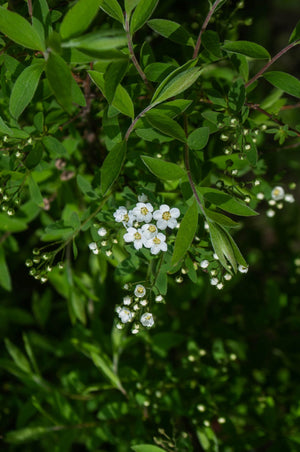
About
Spirea is a deciduous shrub from the Rosaceae family, with species native to Asia, Europe, and North America. The genus includes both spring-blooming and summer-blooming types. Spring bloomers like Spiraea vanhouttei ('Renaissance') and Spiraea nipponica 'Snowmound' produce masses of small white flowers on arching branches. Summer-blooming species like Spiraea japonica and Spiraea bumalda offer flat-topped clusters of pink, red, or white flowers and often feature colorful foliage that emerges in spring and turns again in fall.
Popular cultivars include:
- 'Gold Mound', known for its vivid chartreuse foliage.
- 'Anthony Waterer', with crimson blooms and reddish-tinged new growth.
- Double Play® Series, like 'Candy Corn' and 'Doozie', which offer bold color changes and continuous bloom.
- Spiraea thunbergii 'Ogon', valued for its fine texture and golden spring foliage.
Spirea typically grows in a mounded form from 2 to 6 feet tall and wide, depending on the variety. It is cold-hardy, adaptable to many soil types, and generally deer and rabbit resistant—making it an excellent choice for borders, mass plantings, and foundation landscapes.
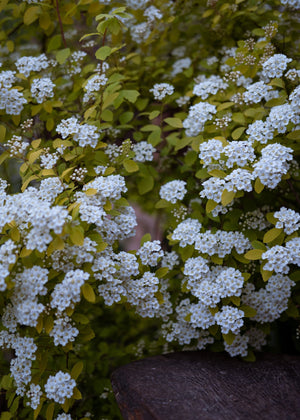
PLANTING
USDA Hardiness Zones: Most spirea varieties are hardy in Zones 3–8, with some cultivars extending into Zone 9.
Soil: Prefers well-drained, average garden soil but tolerates clay and sandy sites. Amending with compost improves vigor.
Sunlight: Full sun (6+ hours) promotes the best flowering and foliage color. Some types tolerate partial shade but may bloom less.
Watering: Water regularly during establishment. Once established, spirea is moderately drought tolerant.
Spacing: Space 2 to 5 feet apart depending on the variety’s mature size.
Planting Time: Plant in spring or early fall for best establishment. Avoid peak summer heat when planting.
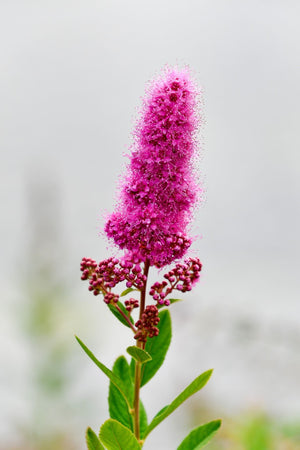
CARE
Watering: Water deeply during dry periods, especially in the first growing season. Established plants can handle moderate drought.
Fertilizing: Apply a balanced fertilizer in early spring to encourage lush growth and prolific blooms. Avoid excessive fertilizing to prevent leggy growth.
Pruning: Prune spring-blooming varieties immediately after flowering to maintain shape and encourage next year’s blooms. Summer-blooming types can be pruned in late winter or early spring before new growth begins. Cutting spirea back to 6–12 inches rejuvenates older plants and improves blooming.
Pests and Diseases: Spirea is generally pest-free but may occasionally be affected by aphids or powdery mildew. Provide good air circulation and avoid overhead watering.
Mulching: Use mulch to retain soil moisture, suppress weeds, and moderate soil temperature. Keep mulch a few inches from the base of stems.
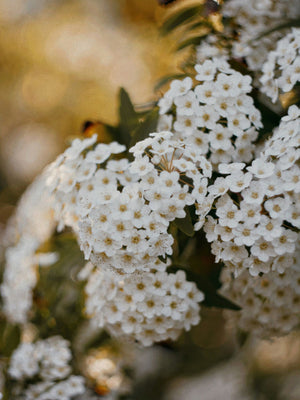
HOW TO USE
Focal Point: Colorful varieties like 'Rainbow Fizz', 'Double Play Candy Corn', or 'Gold Mound' work beautifully as small focal point shrubs in borders or entry gardens.
Foundation Plantings: Use low-growing types such as 'Little Princess', 'Neon Flash', or 'Lemon Princess' in front of evergreens or around patios for consistent form and seasonal interest.
Mass Plantings and Hedges: Spirea shines in mass plantings along walkways, retaining walls, or open slopes. Use 'Gold Flame' or 'Anthony Waterer' for consistent color and form.
Pollinator Gardens: The summer-blooming varieties attract bees and butterflies. Combine with coneflowers, salvia, and sedum for a low-maintenance pollinator habitat.
Mixed Shrub Borders: Pair spirea with contrasting textures like boxwood, dwarf hydrangea, or ornamental grasses such as Pennisetum or Panicum.
Cut-Back Borders: Spirea responds well to rejuvenation pruning and can be used in cut-back borders where plants are trimmed yearly to maintain a tidy structure.
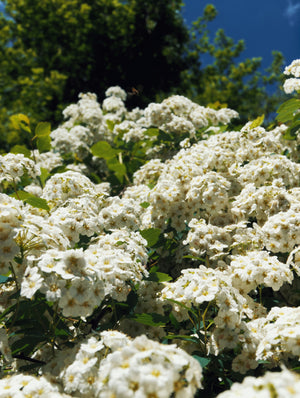
Common Questions
Do deer eat spirea? Spirea is generally deer resistant, though no plant is entirely deer-proof.
Do rabbits eat spirea? Rabbits tend to avoid spirea, especially mature plants with woody stems.
Is spirea toxic to dogs? Spirea is not known to be toxic to dogs.
Is spirea toxic to cats? Spirea is also not listed as toxic to cats.
Is spirea evergreen? No, spirea is deciduous and drops its leaves in fall.
Can I cut my spirea to the ground? Yes, especially for summer-blooming types. Cutting back to 6–12 inches in late winter rejuvenates the plant and encourages vigorous new growth.
When to prune spirea? Prune spring-blooming types right after flowering. Prune summer-blooming types in late winter or early spring.
How to care for spirea? Water during dry periods, fertilize lightly in spring, prune appropriately for bloom type, and provide sun for best color and performance.
Conclusion
Spirea is a landscape favorite for good reason—it offers brilliant seasonal color, reliable blooms, and ease of care in nearly any setting. With options ranging from compact ground covers to flowering hedges, spirea fits into formal, informal, and naturalistic gardens alike. Its resilience, wide range of colors, and low-maintenance nature make it an excellent addition for both new and experienced gardeners.
The Spirea Collection
Sold Out
Sold Out
Sold Out
Sold Out

